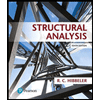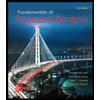
ELEMENTARY SURVEYING (LOOSELEAF)
15th Edition
ISBN: 9780134604701
Author: GHILANI
Publisher: PEARSON
expand_more
expand_more
format_list_bulleted
Concept explainers
Question
Chapter 21, Problem 21.14P
To determine
The steps that must be performed in making subdivision surveys.
The steps to be performed in making subdivision surveys are as follows:
- Exterior survey
- Interior survey
- Design
- Layout
As its name suggests, subdivision survey is the branch of
This type of survey is required for creating small lots in a new small piece of land. The rules to guide the surveys are based on laws which are variable with respect to state and time.
The order of steps performed in making subdivision surveys are as follows.
Expert Solution & Answer
Want to see the full answer?
Check out a sample textbook solution
Students have asked these similar questions
B2. For the truss below, determine all member forces. Hint: see the provided slide with the
problem set. P₁ = 12 kip and P2 = 6 kip (20 pts).
P₁
A
16 ft
D
8 ft
8 ft
8 ft
B
J
K
E
8 ft
8 ft
I
H
G
8 ft
8 ft
8 ft
B₁₂
F
ΠΟΙΟΣ
Directions: Show your solutions explicitly, I.e., do not just write the final answer. Always simplify and box your final
answer.
1. A wall footing is to be constructed on a clay soll 1.4 below the ground. The footing is to support a wall that
imposes a load of 130 kN per meter of wall length. Considering general shear failure, determine the following:
130 kN/m
4m
a. Footing width if the factor of safety is 3.
b. Ultimate bearing capacity if B = 0.95 m.
c. New factor of safety.
Y = 17.92 kN/m²
c = 14.5 kPa
$ -30°
2. A square footing shown has a dimension of 1.5 mx 1.5 m and has its bottom 2 m below the ground surface.
The groundwater table is located at a depth of 3 m below the ground surface. Assume a general shear failure.
Determine the following:
L
2 m
y = 16 kN/m³
c = 14.5 kPa
= 28°
3 m
1.5 m
Ysa1 = 18.5 kN/m³
a. Ultimate bearing capacity of the soll beneath the footing (in kPa).
b. Allowable bearing capacity if it has a factor of safety of 3 (in kPa).
C. Allowable load that the…
B2. For the truss below, determine all member forces. Hint: see the provided slide with the
problem set. P₁ = 12 kip and P₂ = 6 kip (20 pts).
P₁
16 ft
D
8 ft
8 ft
8 ft
B
K
E
8 ft
8 ft
8 ft
H
8 ft
В
G
1000
8 ft
Chapter 21 Solutions
ELEMENTARY SURVEYING (LOOSELEAF)
Ch. 21 - Prob. 21.1PCh. 21 - Prob. 21.2PCh. 21 - Prob. 21.4PCh. 21 - Prob. 21.6PCh. 21 - Prob. 21.7PCh. 21 - Prob. 21.8PCh. 21 - Prob. 21.9PCh. 21 - Prob. 21.10PCh. 21 - Prob. 21.11PCh. 21 - Prob. 21.12P
Ch. 21 - Prob. 21.13PCh. 21 - Prob. 21.14PCh. 21 - Prob. 21.15PCh. 21 - Prob. 21.16PCh. 21 - Prob. 21.17PCh. 21 - Prob. 21.18PCh. 21 - Prob. 21.19PCh. 21 - Prob. 21.20PCh. 21 - Prob. 21.21PCh. 21 - Prob. 21.22PCh. 21 - Prob. 21.23PCh. 21 - Prob. 21.24PCh. 21 - Prob. 21.26PCh. 21 - Prob. 21.28PCh. 21 - Prob. 21.29PCh. 21 - Prob. 21.30PCh. 21 - Prob. 21.31PCh. 21 - Prob. 21.32P
Knowledge Booster
Learn more about
Need a deep-dive on the concept behind this application? Look no further. Learn more about this topic, civil-engineering and related others by exploring similar questions and additional content below.Similar questions
- 14.1 A beam of rectangular cross section is 125 mm wide and 200 mm deep. If the maximum bending moment is 28.5 kN⚫m, determine (a) the maximum tensile and compressive bending stress, and (b) the bending stress 25 mm from the top of the section. 14.2 A rectangular beam 50 mm wide and 100 mm deep is subjected to bending. What bending moment will cause a maximum bending stress of 137.9 MN/m² (MPa)? 14.3 Determine the bending moment in a rectangular beam 3 in. wide and 6 in. deep if the maximum bend- ing stress is 15,000 psi.arrow_forwardB3. For the Howe truss below, assume all members are pin connected and take P₁ = 5 kN and P₂ = 10 kN: a. Determine all member forces (16 pts). b. Use a section cut to verify your answers for members GF, GD, and CD (4 Pts) P₁ A H 500 8 0000 B 0000] 2 m m 2 m 3 m B E D marrow_forwardI need detailed help solving this exercise from homework of Engineering Mathematics II.I do not really understand how to do, please do it step by step, not that long but clear. Thank you!P.S.: Please do not use AI, thanks!arrow_forward
- I need detailed help solving this exercise from homework of Engineering Mathematics II.I do not really understand how to do, please do it step by step, not that long but clear. Thank you!P.S.: Please do not use AI, thanks!arrow_forwardI need detailed help solving this exercise from homework of Engineering Mathematics II.I do not really understand how to do, please do it step by step, not that long but clear. Thank you!P.S.: Please do not use AI, thanks!arrow_forwardI need detailed help solving this exercise from homework of Engineering Mathematics II.I do not really understand how to do, please do it step by step, not that long but clear. Thank you!P.S.: Please do not use AI, thanks!arrow_forward
- I need detailed help solving this exercise from homework of Engineering Mathematics II.I do not really understand how to do, please do it step by step, not that long but clear. Thank you!P.S.: Please do not use AI, thanks!arrow_forwardI need detailed help solving this exercise from homework of Engineering Mathematics II.I do not really understand how to do, please do it step by step, not that long but clear. Thank you!P.S.: Please do not use AI, thanks!arrow_forwardI need detailed help solving this exercise from homework of Engineering Mathematics II.I do not really understand how to do, please do it step by step, not that long but clear. Thank you!P.S.: Please do not use AI, thanks!arrow_forward
- I need detailed help solving this exercise from homework of Engineering Mathematics II.I do not really understand how to do, please do it step by step, not that long but clear. Thank you!P.S.: Please do not use AI, thanks!arrow_forwardB1.For the truss below, take P₁ = 4 kip and P₂ = 3 kip: a. Determine all member forces. Hint: first find zero-force members (16 pts). b. Use a section cut to verify your answers for members JI, BI, and BC (4 Pts) В 18 ft 6 ft H B 6 ft C 8 ft D p81 8 ft E 8 ft 6 ft F6ftarrow_forwardQ13: The line CD, C(xc, 6), D(6,yd), the point D is on the right of point C, the value of horizontal effect H(3,0) is on the right of point C, the vertical effect V(0, -2) right of H. the distance between projection of the points H, V is 5cm, Find: 1- The value of xc and yd. 2- The distance between projections of the points C, D. 3- The true length (T.L.) of CD. 4- The angles a and ẞ. 5- A point F in the middle of line CD, find F (xf, yf).arrow_forward
arrow_back_ios
SEE MORE QUESTIONS
arrow_forward_ios
Recommended textbooks for you

 Structural Analysis (10th Edition)Civil EngineeringISBN:9780134610672Author:Russell C. HibbelerPublisher:PEARSON
Structural Analysis (10th Edition)Civil EngineeringISBN:9780134610672Author:Russell C. HibbelerPublisher:PEARSON Principles of Foundation Engineering (MindTap Cou...Civil EngineeringISBN:9781337705028Author:Braja M. Das, Nagaratnam SivakuganPublisher:Cengage Learning
Principles of Foundation Engineering (MindTap Cou...Civil EngineeringISBN:9781337705028Author:Braja M. Das, Nagaratnam SivakuganPublisher:Cengage Learning Fundamentals of Structural AnalysisCivil EngineeringISBN:9780073398006Author:Kenneth M. Leet Emeritus, Chia-Ming Uang, Joel LanningPublisher:McGraw-Hill Education
Fundamentals of Structural AnalysisCivil EngineeringISBN:9780073398006Author:Kenneth M. Leet Emeritus, Chia-Ming Uang, Joel LanningPublisher:McGraw-Hill Education
 Traffic and Highway EngineeringCivil EngineeringISBN:9781305156241Author:Garber, Nicholas J.Publisher:Cengage Learning
Traffic and Highway EngineeringCivil EngineeringISBN:9781305156241Author:Garber, Nicholas J.Publisher:Cengage Learning


Structural Analysis (10th Edition)
Civil Engineering
ISBN:9780134610672
Author:Russell C. Hibbeler
Publisher:PEARSON

Principles of Foundation Engineering (MindTap Cou...
Civil Engineering
ISBN:9781337705028
Author:Braja M. Das, Nagaratnam Sivakugan
Publisher:Cengage Learning

Fundamentals of Structural Analysis
Civil Engineering
ISBN:9780073398006
Author:Kenneth M. Leet Emeritus, Chia-Ming Uang, Joel Lanning
Publisher:McGraw-Hill Education


Traffic and Highway Engineering
Civil Engineering
ISBN:9781305156241
Author:Garber, Nicholas J.
Publisher:Cengage Learning